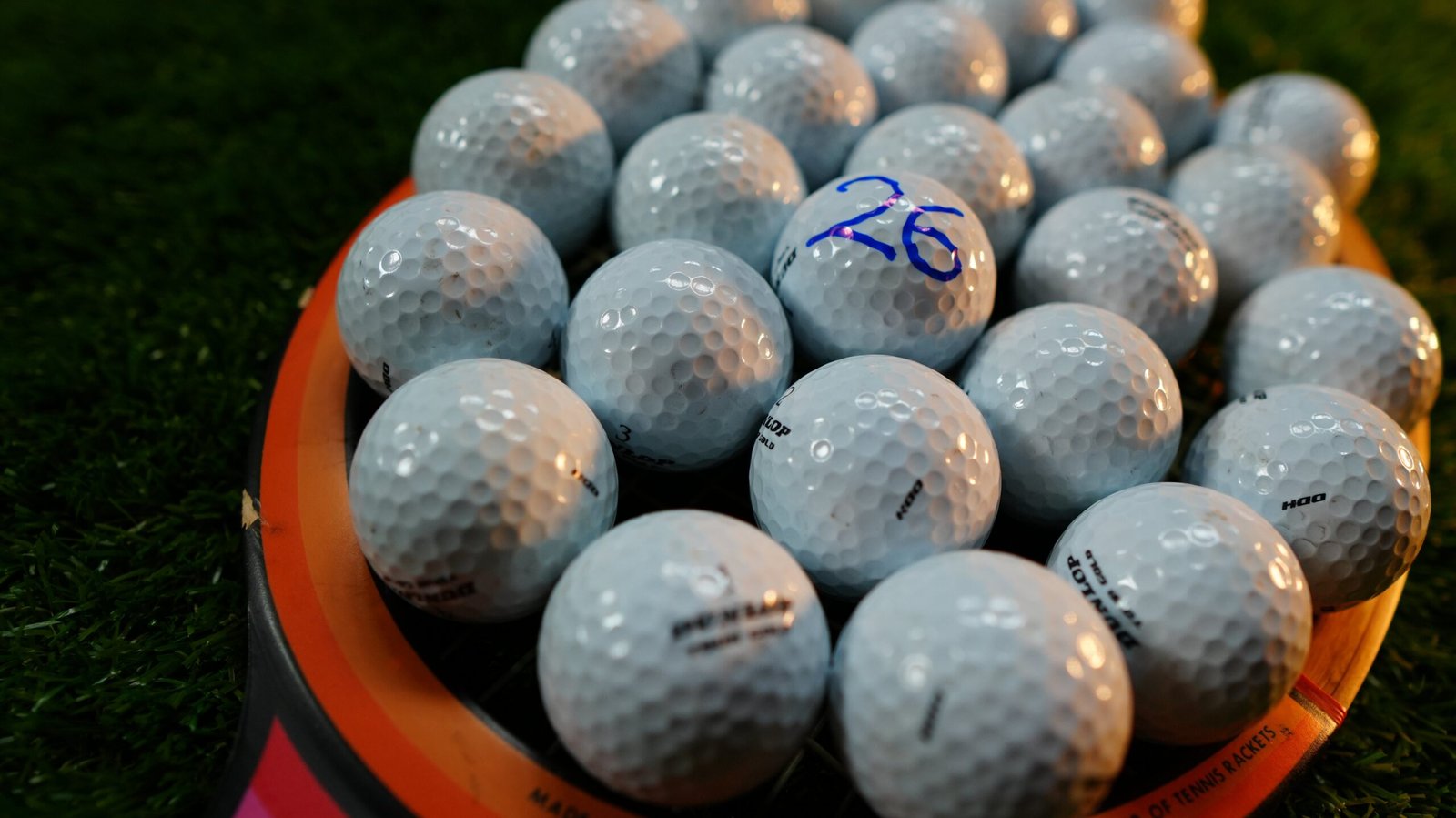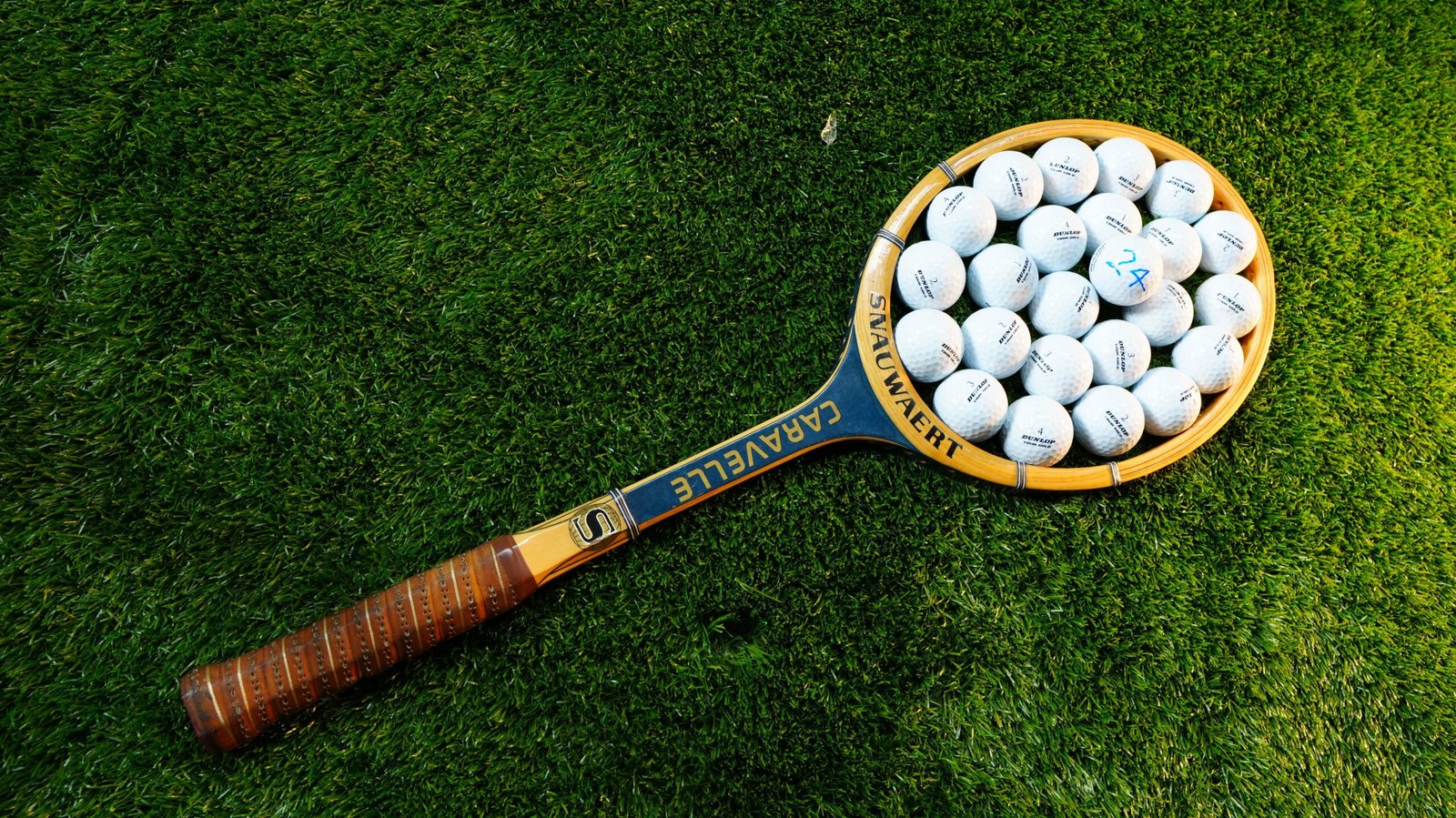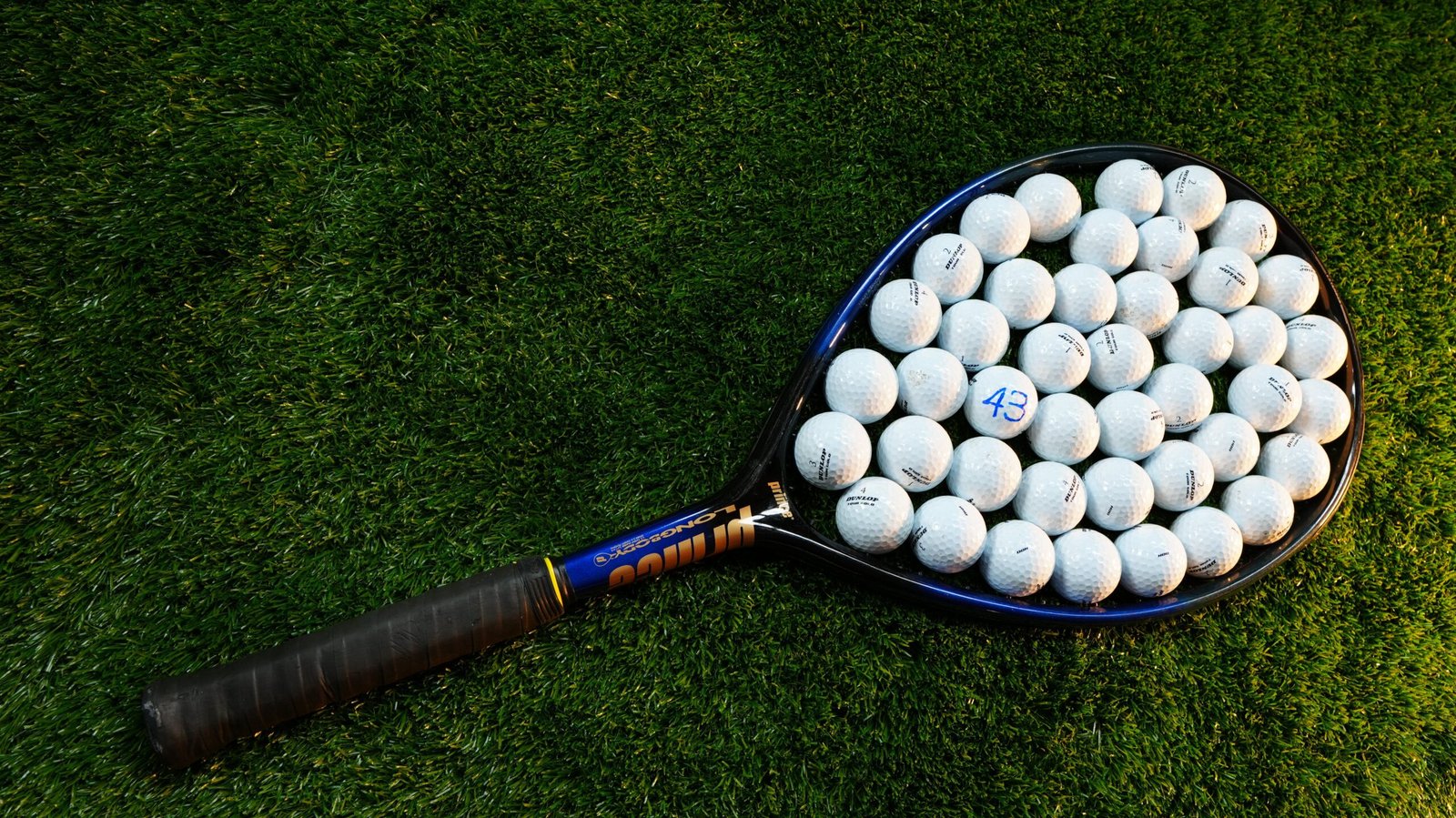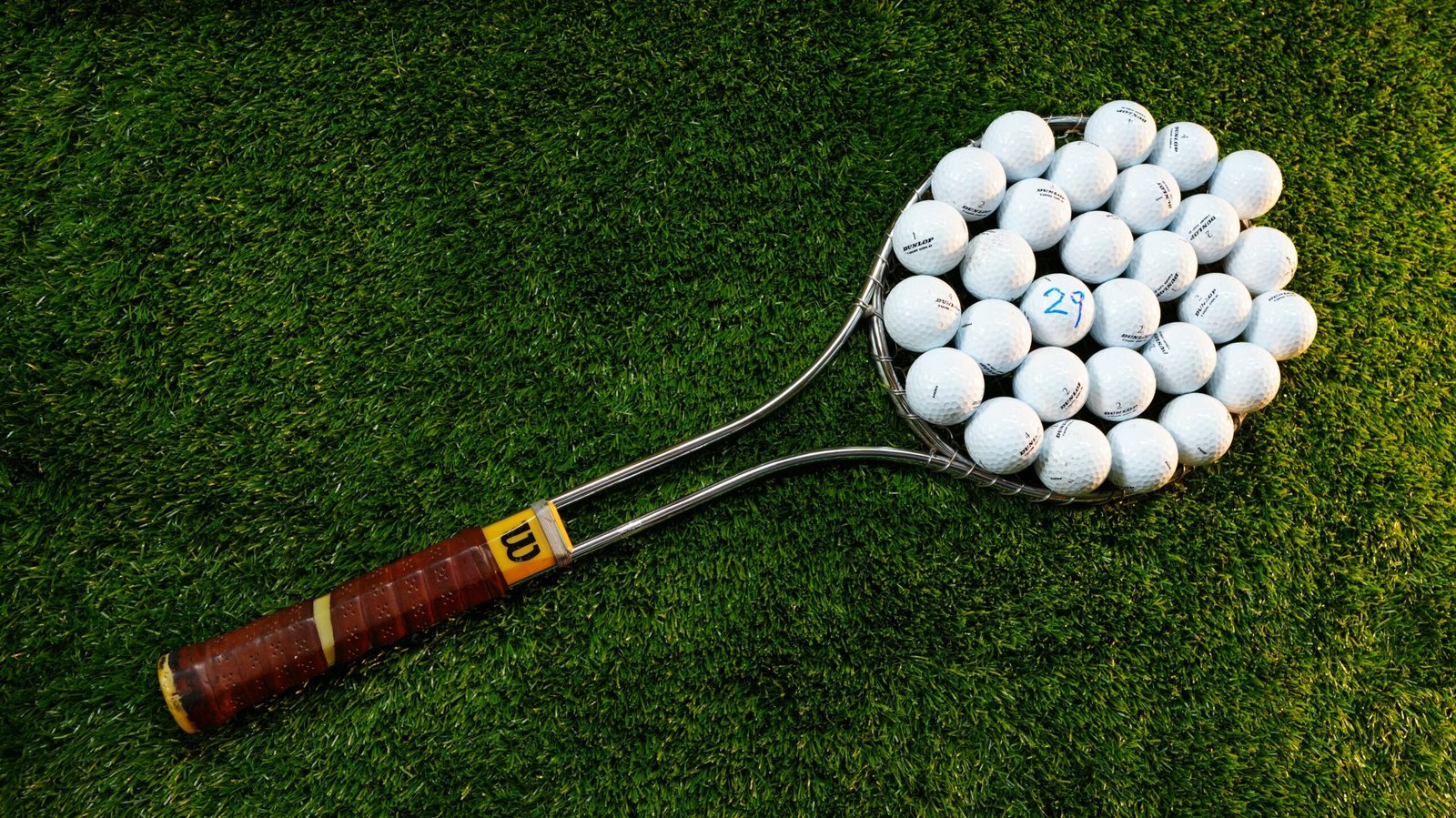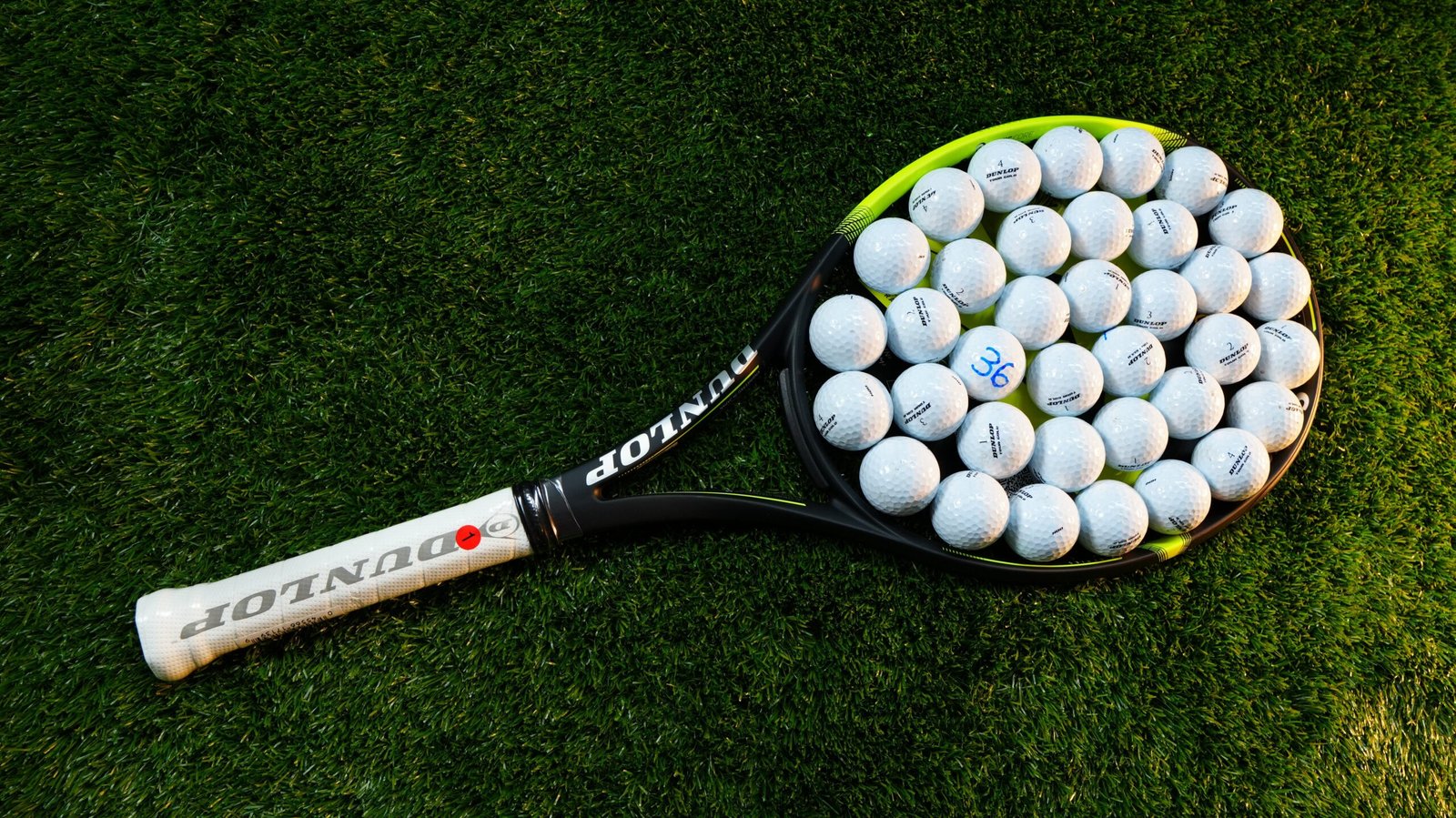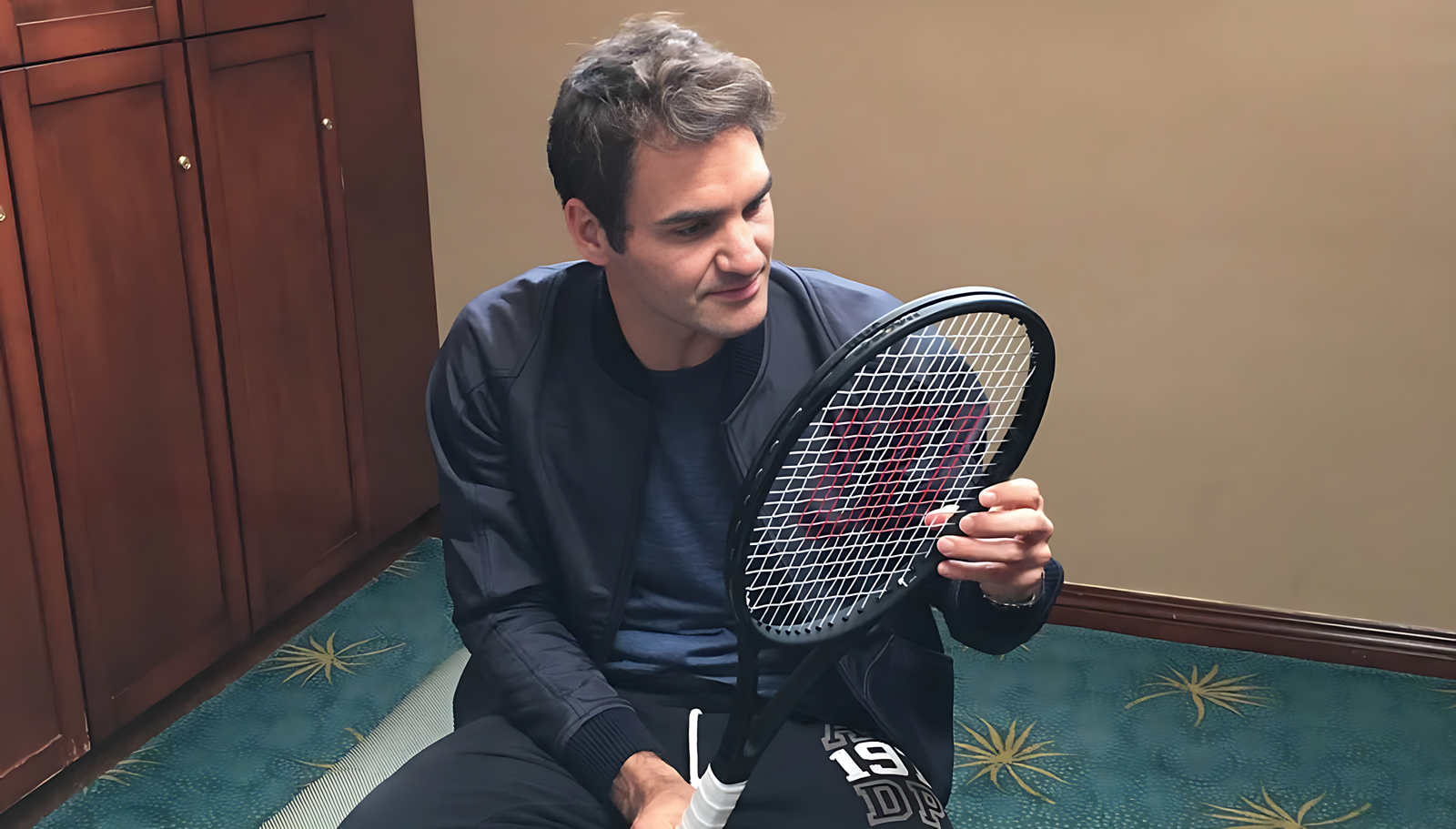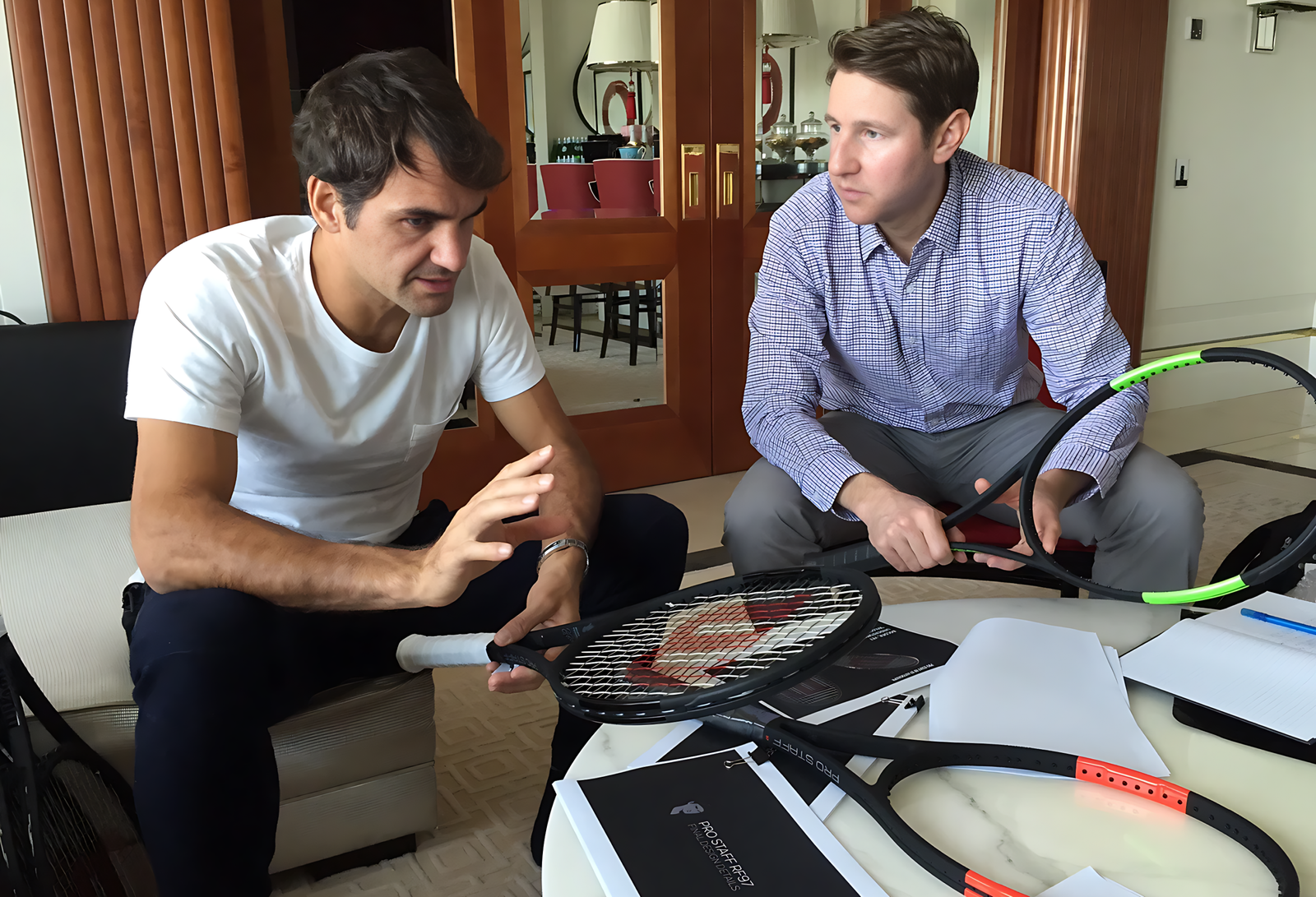For 100 years, tennis was synonymous with wooden rackets which had small head sizes around 65 sq inches. It was simple physics, a large head would warp and bend under pressure of the serve and big forehands. Small head sizes meant you had to be super-accurate and powerful due to the low rebound of shorter strings. Further, the racket profile almost disappeared at an acute angle markedly discouraging aggressive top-spin. In 1953 René Lacoste patented a design for a metal racket which Wilson converted in to the T2000. But the T2000 was stuck in the tradition of the small head size. 67-sq-inches. In wasn’t until 1975 that Howard Head made the Prince Classic at 110 sq inches which also won at Wimbledon (helped by Pam Shriver).
Here I compare rackets by their ability to hold golf balls. One golf ball is about the size of the hitting area of a tennis ball on the string. So if there are 24 golf balls that’s 24 little chances to hit the ball on the strings. So let’s compare some historic rackets……
The Modern Era: Federer’s Big Decision
Successful players are reluctant to change rackets too many times during their career. Pete Sampras stuck to his Wilson Pro Staff with an area of 85 sq inches (550cm²), admitting years after retirement that he might have benefited from trying newer technology. Roger Federer played with 90-inch frame for a decade before finally switching to to a 97-inch one. Federer had previously changed rackets only once as a pro. Initially, he used the same racket as Sampras, but in 2002 he switched to a slightly larger 90-inch frame (580cm²). Although he maintained that he was comfortable with his racket, he was experimenting in the background. In the latter half of 2012, Federer requested Wilson to create a variation of his existing racket with a larger frame. Wilson’s technicians worked closely with Federer in Switzerland, making daily adjustments based on his feedback. Federer’s early exit at Wimbledon 2013 allowed him additional time to experiment with larger frames. Federer added two post-Wimbledon clay court tournaments to test a larger frame, but reverted back to his old racket after an unsatisfactory initial experience. Continued testing led him to choose a 97-inch frame (625cm²) for the 2014 season, and he has used it since. The racket, branded the Wilon RF97 became a big seller despite being too heavy for most “normal” players!.The larger frame improved Federer’s topspin backhand, a key factor in his 2017 Australian Open final victory against Nadal. His coach, Ivan Ljubicic, encouraged him to use the topspin backhand more, particularly on returns.

